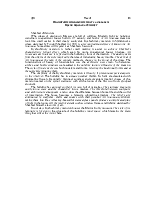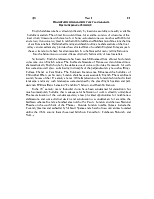




















models of sculpture they plan to carve or mold, they often use a wire skeleton, called an armature, inside the clay. In this way, they can build up clay around the armature so that it stays up to form figures with arms and legs that won 't droop or collapse.
Have you ever seen a pottery maker, or potter, at work? Since ancient times, much pottery has been made using a device called a potter's wheel. The wheel helps the potter to make a perfectly shaped peace of pottery from soft clay. Yet pottery can also be "handbuilt", or shaped entirely by hand.
There are several different ways to make pottery by hand. You know, from working with clay, that it easy to form it into shaper. One way that you can from pottery into shapes is by pinch method. Start with a lump of clay form it into shapes. Start with a lump of clay and form it into a ball shape. Then press your thumb into the clay, Sgueeze the clay between your thumb and index finger, working the clay outward from the bottom up. Turn the ball of clay as you work so that you can make a clay form that looks good from all sides.
Another common method of hand-building is the slab method. Roll clay into a flat slab, Cut shapes from the slab and join them together with a creamy mixture of water, clay, and vinegar called slip.
ДЗ TextI 5
Прочитайте и переведите текст со словарем.
Время перевода 45 минут
If one were to choose a single picture to summarize the achievement of Dutch and Flemish flower painting it might well be the picture reproduced. Executed at the apogee of seventeenth-century still-life painting, it combines the strength of earlier work with an added elegance and technical virtuosity. In the generation to follow, elegance becomes ornamentalism; virtuosity, display.
Of this middle generation of still-life painters, de Heem is considered the most influential. He was born in Holland , spend his early years in Utrecht and Leiden, and moved south to Antwerp in 1636. Receptive to the current styles of both northern and southern Netherlands, he synthesized them into a new style of his own which was to set the pattern of the decorative flowerpiece for the rest of the seventeen century and far into the eighteenth, and which was to spread to France, Italy, and Spain.
This Vase of Flowers, however, does more than summarize an historical style. It survives for us as a brilliant solution of the problem of combining profusion and control. Not restricted to a variety of flowers, the picture includes vegetables and insects and reptiles, as well. Each detail, furthermore, has been painted with a desire for scientific exactitude, down to the last hair on the bumblebee's back. The colors, too, set off as they are against a luminous dark ground, and much more saturated than in de Heem's earlier works, add to the sense of richness.
But for all the painting's harmony, it is not without a vaguely sinister uneasiness. Partly this comes from the asymmetry of the arrangement,.partly from the hidden insects, and from intimations of decay in the fallen poppy or the broke wheatstalk. De Heem, when he lived at university town of Leiden, had been exposed to the tradition of Vanitas still life painting centered there, which stressed through symbols the vanity and transitoriness of life on earth. Flowers, particularly cut flowers, with the morning dew still clinging
Уважаемый посетитель!
Чтобы распечатать файл, скачайте его (в формате Word).
Ссылка на скачивание - внизу страницы.